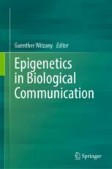Search
Search Results
-
Young SINEs in pig genomes impact gene regulation, genetic diversity, and complex traits
Transposable elements (TEs) are a major source of genetic polymorphisms and play a role in chromatin architecture, gene regulatory networks, and...

-
Participation of Proteins of the CPSF Complex in Polyadenylation of Transcripts Read by RNA Polymerase III from SINEs
AbstractSINEs are mobile genetic elements of multicellular eukaryotes that arose during evolution from various tRNAs, as well as from 5S rRNA and 7SL...

-
Diversity of short interspersed nuclear elements (SINEs) in lepidopteran insects and evidence of horizontal SINE transfer between baculovirus and lepidopteran hosts
BackgroundShort interspersed nuclear elements (SINEs) belong to non-long terminal repeat (non-LTR) retrotransposons, which can mobilize dependent on...

-

-
SETDB1 regulates short interspersed nuclear elements and chromatin loop organization in mouse neural precursor cells
BackgroundTransposable elements play a critical role in maintaining genome architecture during neurodevelopment. Short Interspersed Nuclear Elements...

-
LINE-1 Retrotransposition Assays in Embryonic Stem Cells
The ongoing mobilization of active non-long terminal repeat (LTR) retrotransposons continues to impact the genomes of most mammals, including humans...
-
KPT330 improves Cas9 precision genome- and base-editing by selectively regulating mRNA nuclear export
CRISPR-based genome engineering tools are associated with off-target effects that constitutively active Cas9 protein may instigate. Previous studies...

-
The non-LTR retrotransposons of Entamoeba histolytica: genomic organization and biology
Genome sequence analysis of Entamoeba species revealed various classes of transposable elements. While E. histolytica and E. dispar are rich in...

-
Genomes of the Orestias pupfish from the Andean Altiplano shed light on their evolutionary history and phylogenetic relationships within Cyprinodontiformes
BackgroundTo unravel the evolutionary history of a complex group, a comprehensive reconstruction of its phylogenetic relationships is crucial. This...

-
The multivariate analysis of variance as a powerful approach for circular data
BackgroundA broad range of scientific studies involve taking measurements on a circular, rather than linear, scale (often variables related to times...

-
Comparative analysis of transposable elements provides insights into genome evolution in the genus Camelus
BackgroundTransposable elements (TEs) are common features in eukaryotic genomes that are known to affect genome evolution critically and to play...

-
Search for SINE repeats in the rice genome using correlation-based position weight matrices
BackgroundTransposable elements (TEs) constitute a significant part of eukaryotic genomes. Short interspersed nuclear elements (SINEs) are...

-
Bi-directional Transcription, Double-Stranded RNA and the Implications on Genome Evolution
Double-stranded RNA (dsRNA) within cells indicates viral infection and triggers a robust innate immune response. Counterintuitively, cells also...
-
Polyadenylation of Sine Transcripts Generated by RNA Polymerase III Dramatically Prolongs Their Lifetime in Cells
Abstract—Short Interspersed Elements (SINEs) are mobile genetic elements of higher eukaryotes, which originated during evolution from various tRNAs...

-
Regulation of Transcription by RNA Polymerase III Promotors in the Norm and Pathology
Abstract —RNA polymerase III synthesizes a wide range of noncoding RNAs shorter than 400 nucleotides in length. These RNAs are involved in protein...

-
Multiple and diversified transposon lineages contribute to early and recent bivalve genome evolution
BackgroundTransposable elements (TEs) can represent one of the major sources of genomic variation across eukaryotes, providing novel raw materials...

-
Potential Contribution of Retrotransposons to Learning and Memory
Increasing evidence indicates that insertion of transposable elements, particularly retrotransposons, may play a critical role in learning and...
-
A retrotransposon storm marks clinical phenoconversion to late-onset Alzheimer’s disease
Recent reports have suggested that the reactivation of otherwise transcriptionally silent transposable elements (TEs) might induce brain...

-
Repetitive Sequences in Sesame Genome
Repetitive DNA sequences are the homologous DNA fragments with multiple copies and are the main components in higher plant genomes. Reliable...
-
DNA methylation haplotype block signatures responding to Staphylococcus aureus subclinical mastitis and association with production and health traits
BackgroundDNA methylation has been documented to play vital roles in diseases and biological processes. In bovine, little is known about the...

